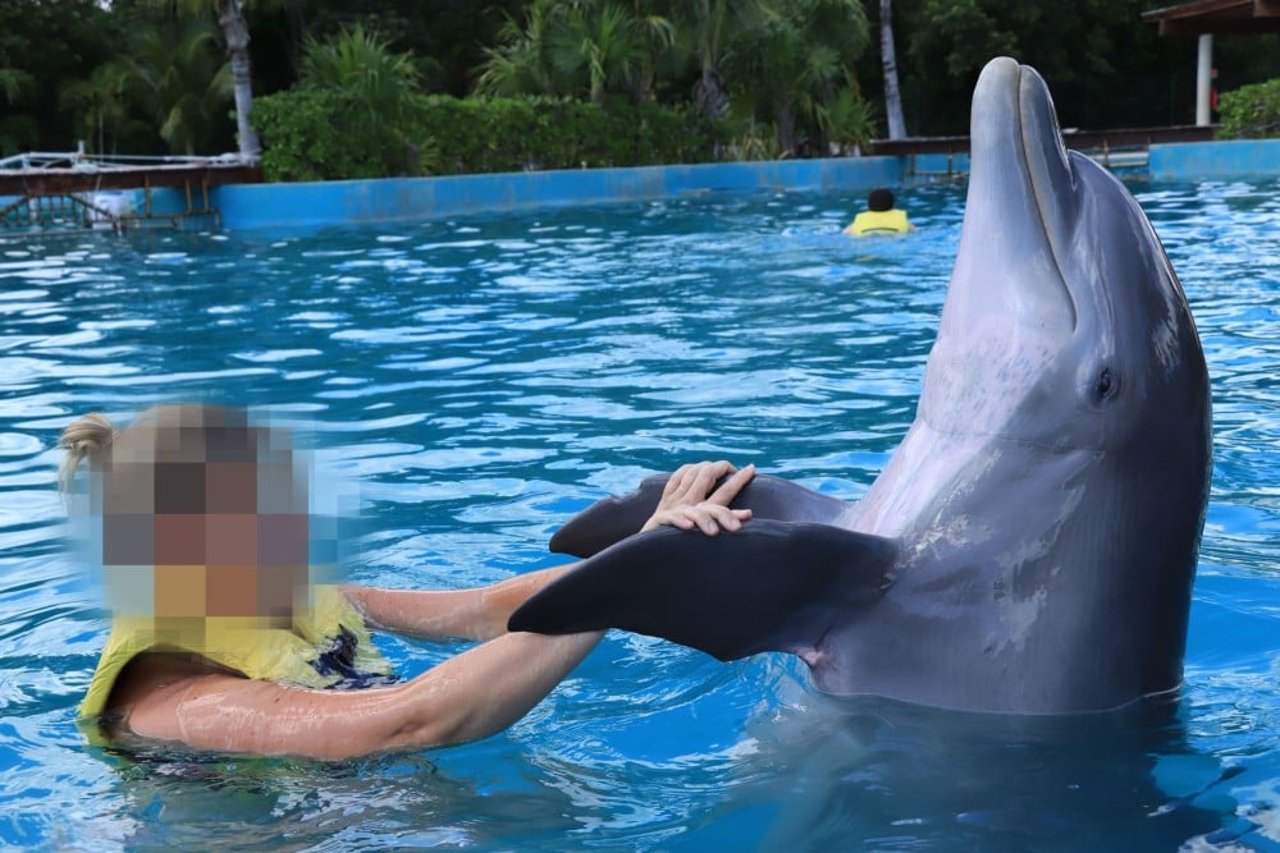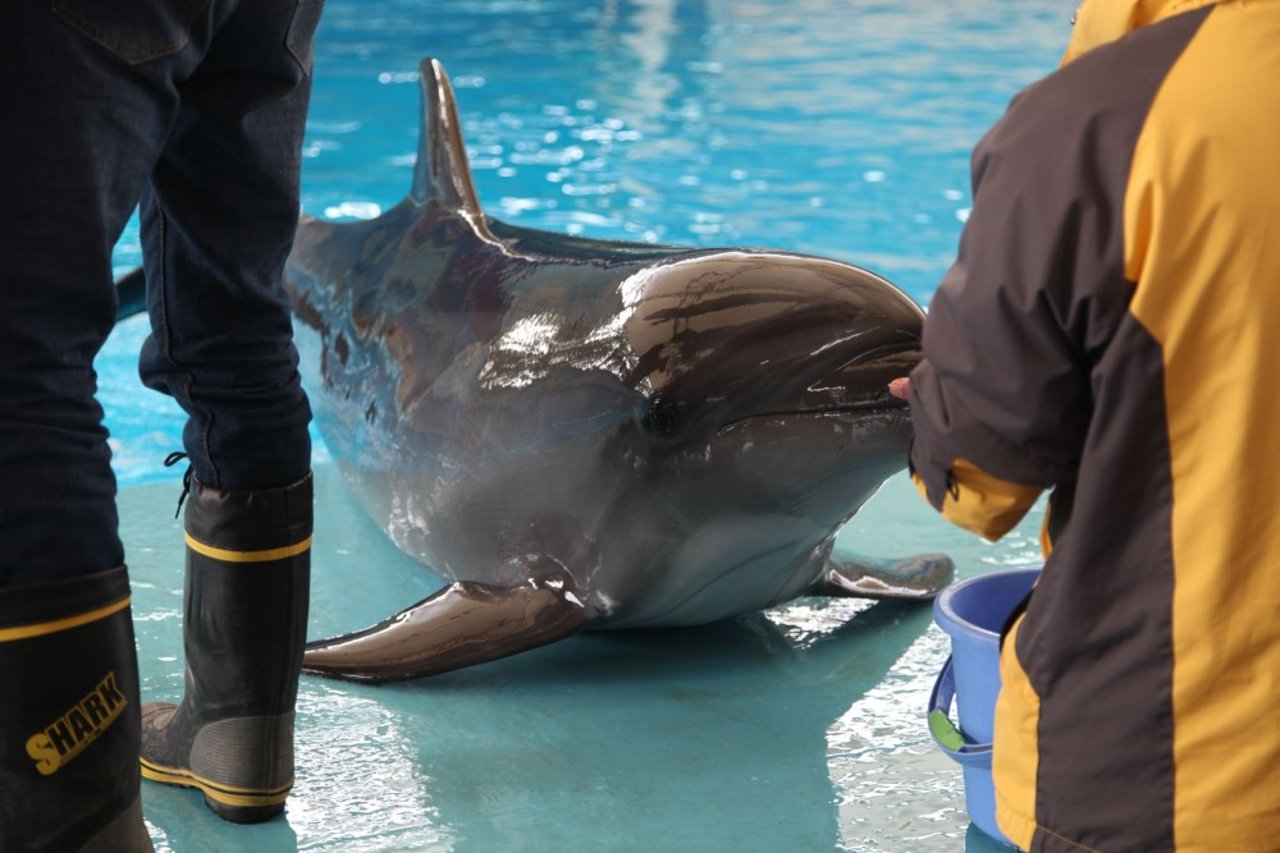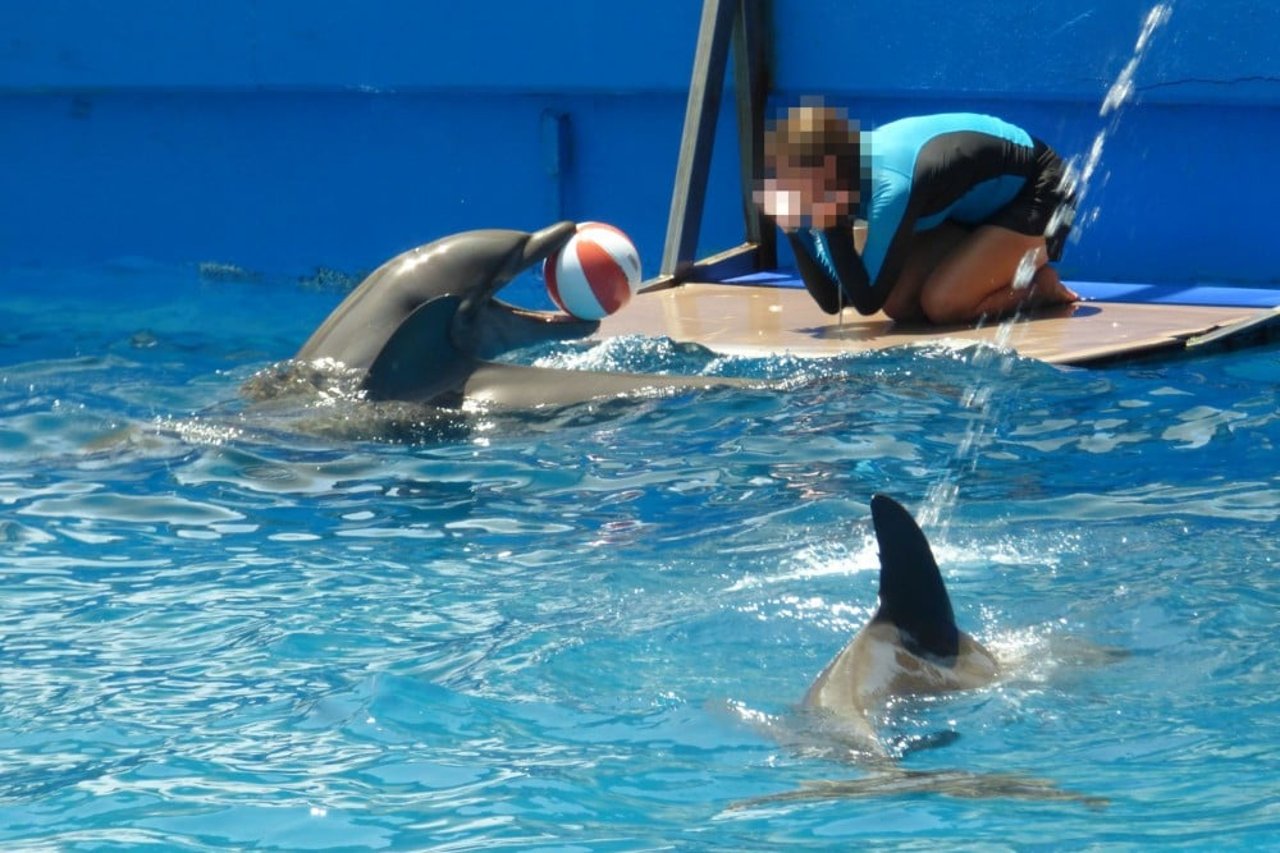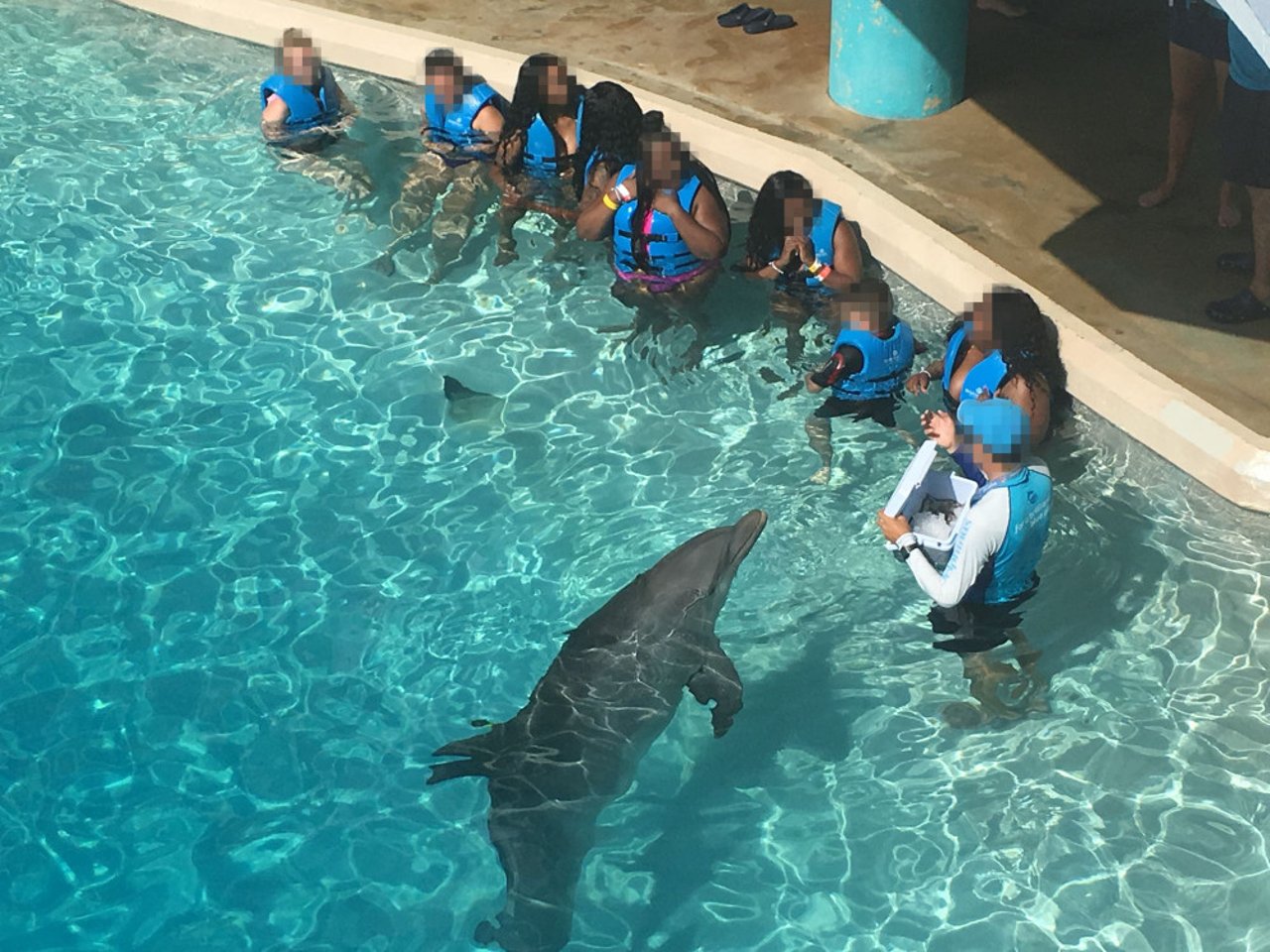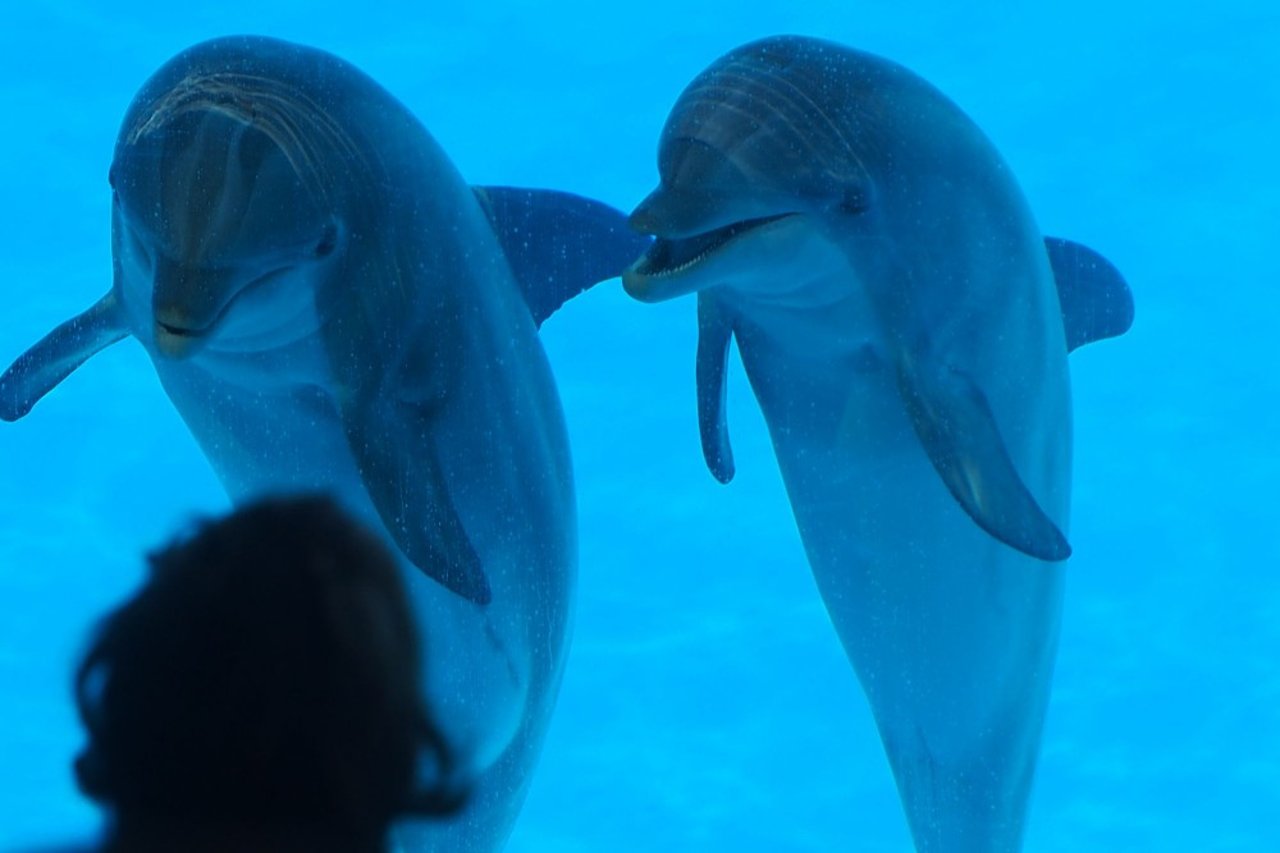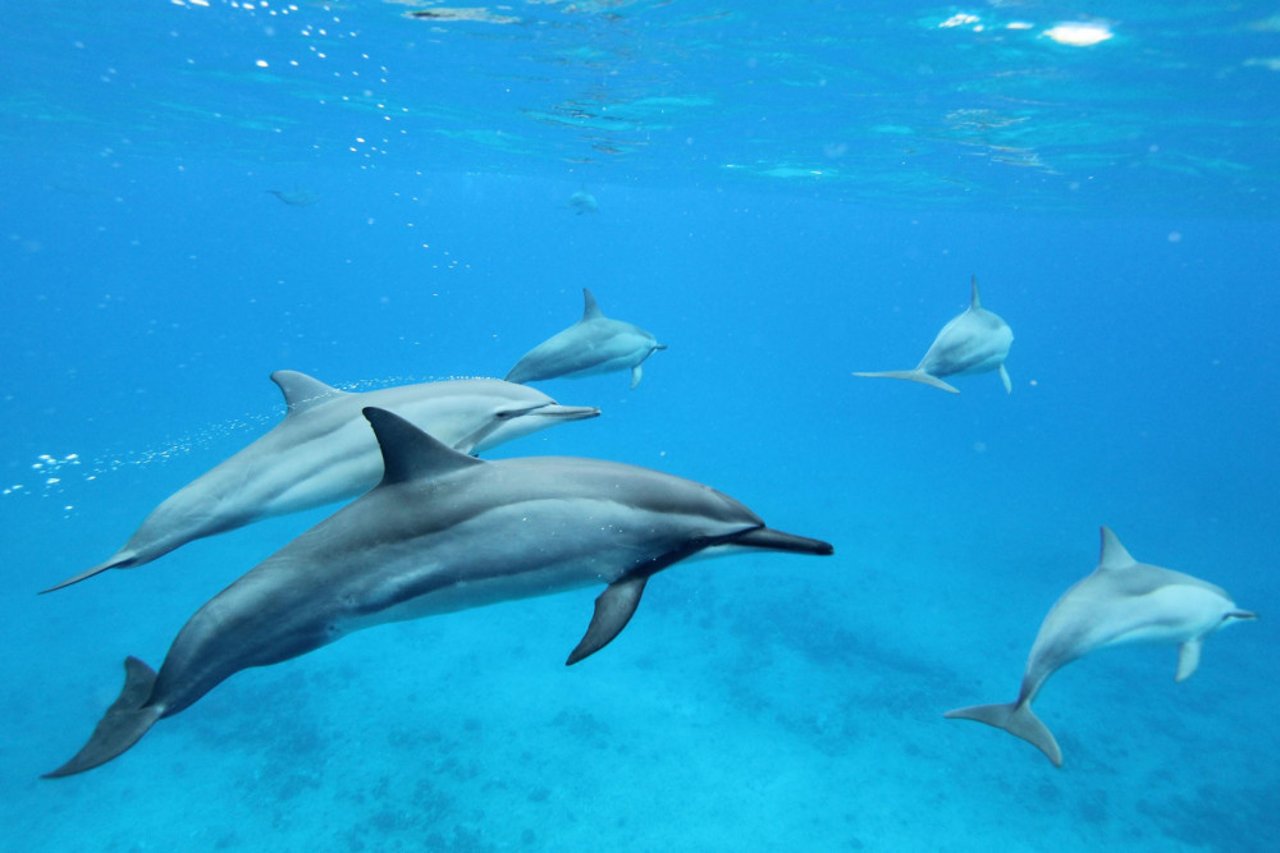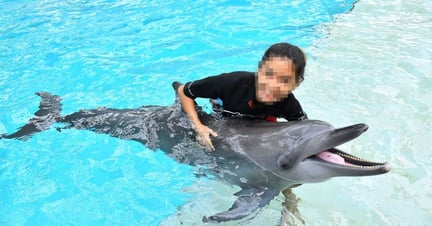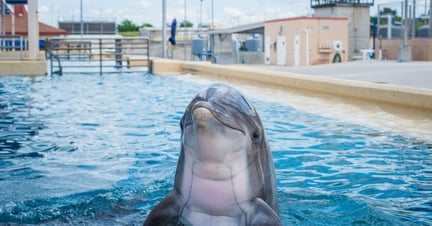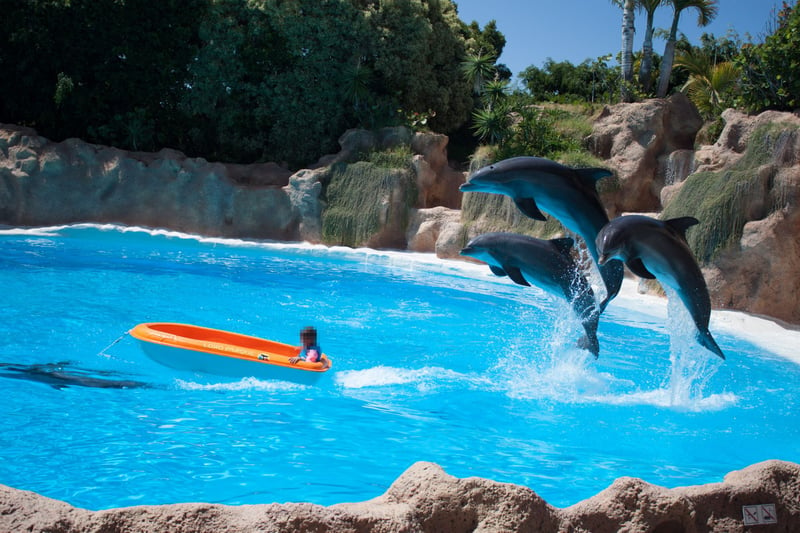
5 reasons you should never swim with dolphins on vacation
Blog
Despite the common images of happy-looking dolphins and laughing children you’ve probably seen before, don’t be fooled by the smiles
This blog was written by Julie Cappiello, U.S. Campaign Manager for the Wildlife. Not Entertainers campaign
Who doesn’t love a well-deserved vacation, spending quality time with family on the shores of a sunny coast? The excitement and anticipation always ramps up when you’re browsing sites like TripAdvisor and Airbnb, looking for the best, well-reviewed activities to book. Whether you’re planning activities for a winter getaway, a fun-filled spring break, or an unforgettable summer, there are definitely activities you should avoid.
Dolphins living in captivity are suffering silently for the sake of entertainment. If you’re planning to swim with dolphins on your vacation, here are 5 reasons why you should reconsider.
1. Dolphins aren’t smiling. It’s just the shape of their face
Dolphins may look like they’re happy to us, but their “smiles” are illusions. When humans smile, we signal happiness, contentment, and enjoyment to each other. But a dolphin’s toothy grin is not an expression of joy – this is simply an anatomical anomaly. Since dolphins always appear happy to us, the dolphin entertainment industry takes advantage of this misinterpretation to cover up their cruelty. The truth is: dolphins smile even when they’re dead.
Dolphin entertainment forces these curious creatures to live in captive environments and exhibit highly unnatural behaviors, such as “waving,” “tail walking,” and “speaking” by withholding food. Combined with consistent physical interaction with humans, noisy crowds, blaring music, and concrete tanks that affect echolocation, captive dolphins are under an incredible amount of stress. This stress leads dolphins to float lifelessly, swim in circles, and gnaw on the concrete walls or gates of their tanks. We won’t be fooled by their smiles.
2. A life in captivity is no life at all
For a wild, energetic dolphin who can swim up to 40 miles a day, any captive facility, tank or enclosure is too small. The tanks that they are confined in are hundreds of thousands of times smaller than their natural home. Not only is this space uncomfortable – it can be harmful. In hot weather, dolphins are unable to swim to deeper, cooler waters to escape the heat, and the sun’s rays can cause blistering on their sensitive skin.
3. Swimming with dolphins is not safe for your family, or the dolphins
You wouldn’t dream of putting your children in a cage with a lion or tiger. Despite what dolphinaria may have you believe, dolphins are ocean predators, capable of even killing sharks and should be treated as such. Dolphins can be aggressive to people, other dolphins, or even self-harm. While the majority of dolphins at popular tourist venues are bred in captivity, they are not domesticated animals. Pushing people into deeper water, head-jerking and biting causing broken bones, skin abrasions and other injuries have all been reported with direct contact interactions with dolphins.
4. Captive dolphins are bred for a lifetime of captivity
Let’s face facts: dolphins bred in captivity at venues around the world will most likely never be released into the wild. Captive breeding programs tout themselves as "conservation" programs when, in reality, they serve merely to replenish the supply of dolphins for captive exhibits, including interactive programs. Venues who promote breeding as conservation often put less than 1% of their revenue into protecting wild populations. Bottlenose dolphins, who are the most-used species of dolphin for swim-with interactions, are not endangered and therefore should not be bred in captivity.
Furthermore, the early separation of calves from their mothers before many essential life lessons can be taught. For instance, many calves are removed from their mothers before they learn how to properly nurse and thus are less able (or in some cases completely unable) to nurse their own offspring, leading to an increase in infant mortality. By breaking these natural bonds prematurely, captive facilities deprive these dolphins of essential life skills and, thus, worthless for conservation breeding efforts.
5. Dolphin entertainment destroys dolphin families
Dolphins around the world are often traded from venue to venue in efforts to breed the animals and prevent inbreeding, as well as making sure young calves do not disrupt the entertainment shows.
This consistent transport of animals, which increases the likelihood to die by sixfold, from the pods they know to pods they don’t leaves much room for tank aggression. Due to these artificial pods, whom are forced to interact unlike they would in the wild, severe tank aggression is almost certain. Unlike their wild counterparts who can choose who to interact with, dolphins in too-small tanks are forced to interact with others who may have different dialects, or whom they simply don’t like. Signs of aggression in dolphin venues include jaw-popping, ramming into other dolphins with their rostrums, or biting, leaving rake marks.
Unsurprisingly, multiple incidents of dolphins jumping onto tank slide-outs to escape an aggressive tankmate have been recorded by onlookers in facilities around the world.
How can my family still learn about dolphins without supporting ‘swim with the dolphins’ programs?
The best way to commune with dolphins is from the deck of a dolphin watch operation that follows a responsible code of conduct or, better yet, from shore, where you can be sure that you're not harming them and they can't harm you.
Join the movement to protect wild animals
Pledge your support to be an animal-friendly tourist when you travel. You can protect these animals by reducing the demand for wild animals in entertainment in the countries where you are on holiday.
As a thank you for taking our pledge, we'll send you a link to download our animal-friendly pocket travel guide, including a willdife attraction checklist. You can print the guide or save it to your phone or any device, so you'll have it handy on your next trip.
The seven biggest lies the dolphin industry tells
News
Dolphins are wild animals not entertainers. We’re exposing the seven most dangerous myths the multi-billion dollar captive dolphin industry tells the world
Transforming tourism for wildlife
Campaign
Our campaign to transform wildlife tourism aims to safeguard the welfare and conservation of these animals, address the negative animal welfare impacts of tourism, and ensure wildlife can thrive within their natural habitats.
